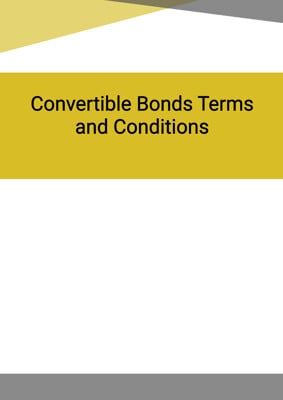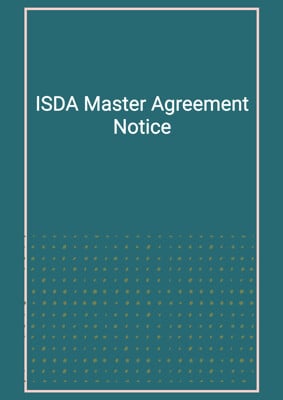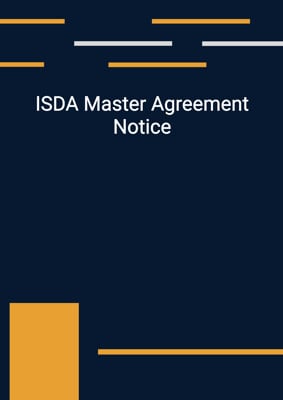How to Tailor the Document for Your Need?
01
Create Document
Click "Create Document" button and the document will be prepared with your account details automatically filled in.
02
Fill Information
Please fill in any additional information by following the step-by-step guide on the left hand side of the preview document and click the "Next" button.
03
Get Document
When you are done, click the "Get Document" button and you can download the document in Word or PDF format.
04
Review Document
Please review the document carefully and make any final modifications to ensure that the details are correct before publication / distribution.
Document Preview
Document Description
Debenture Bonds are a type of financial instrument that companies issue to raise capital. This document is a debenture agreement that outlines the terms and conditions of the debenture. It is important because it establishes the rights and obligations of both the company issuing the debenture and the holder of the debenture.
The entire document consists of a title, content, and several sections. The title of the document is 'Debenture Bonds,' which clearly indicates its purpose. The content of the document includes information about the account job company, such as its account job company reg no. It also contains a debenture number, the amount of the debenture in a specific currency, and the name of the debenture holder.
The document is divided into multiple sections, each addressing different aspects of the debenture agreement. The first section is the introduction, which states that the debenture is made on a specific date by the account job company. It also mentions the registered office address of the company.
The second section specifies the value received by the company and its promise to pay the holder the principal amount, interest, redemption, and any accrued penalties. It also mentions the terms and conditions for these payments.
The third section states that the debenture and its conditions will be governed by the laws of a specific jurisdiction country. This ensures that the legal framework for the debenture is clearly defined.
The document also includes a section for conditions, which further elaborates on specific terms. The first condition relates to interest payments, specifying the annual coupon rate and the frequency of interest payments. It also mentions the compounding of interest and the allocation of excess payments towards the principal amount.
The second condition highlights the duty of the company to meet its obligations under the debenture agreement. It acknowledges the potential harm to the holder in case of non-compliance and includes a provision for liquidated damages to quantify the damages in case of default.
The third condition addresses the payment of the debenture, stating that the company will make amortizing payments on a monthly basis. The amount of the payment will be determined based on the company's financial position and will not be less than the accruing interest.
The document also includes sections for the register of debenture holders, title of noteholders, transfer of debentures, renewal of debentures, notices, integration, redemption, waiver, and severability. Each of these sections provides specific details and instructions related to the respective topic.
In summary, this document is a comprehensive debenture agreement that covers all aspects of the debenture, including its terms, conditions, and obligations of both the company and the holder. It is essential for establishing a clear understanding between the parties involved and ensuring compliance with legal requirements.
How to use this document?
1. Enter the required information: Fill in the debenture number, amount, and holder's name in the designated fields. This ensures accurate identification of the debenture.
2. Understand the terms: Familiarize yourself with the terms and conditions mentioned in the document, including payment obligations, interest rates, and redemption provisions.
3. Comply with legal requirements: Ensure that the debenture agreement is governed by the laws of the specified jurisdiction country. This ensures adherence to legal frameworks.
4. Follow the conditions for interest payments: Calculate and request interest payments on the face amount of the debenture based on the specified interest rate. Submit a notice to the company for monthly interest payments.
5. Be aware of liquidated damages: Understand the provision for liquidated damages in case of default by the company. The damages will be compounded daily and should not be considered as interest.
6. Make timely payments: If requested, make amortizing payments on a monthly basis, ensuring that the payment is not less than the accruing interest on the outstanding balance of the debenture.
7. Maintain a register of debenture holders: Keep a register at the registered office or another designated place, showing the names, addresses, and holdings of debenture holders. Allow authorized individuals to inspect the register.
8. Recognize the holder's rights: Acknowledge the registered holder of the debenture as the absolute owner and do not consider any trust or claim against the debenture. Accept the holder's receipt as a valid discharge.
9. Follow the transfer process: Transfer debentures by completing a written instrument of transfer approved by the company. Submit the transfer document, along with the debenture and required evidence, to the registered office for registration.
10. Renew defaced, worn-out, lost, or destroyed debentures: Pay a fee and provide necessary evidence and indemnity to renew debentures in such cases. Surrender defaced or worn-out debentures before receiving new ones.
11. Use proper notice procedures: Send any notices to the company or holders by post in a prepaid letter. Follow the specified timelines for service and ensure proper addressing and posting.
12. Understand the integration clause: Recognize that this debenture agreement is the final agreement between the company and the holder, superseding any prior or subsequent oral agreements. Any amendments or modifications must be in writing and signed by the holder.
13. Exercise the right to redemption: If desired, request redemption of the debenture, either in whole or in part, at a price equal to 120% of the outstanding principal amount, including accrued interest and penalties.
14. Consider waiver provisions: Understand that the holder's delay or failure to enforce obligations does not waive their right to demand strict compliance. Any waiver or amendment must be in writing and signed by the holder.
15. Recognize severability: If any provision of the debenture agreement is void or unenforceable, it does not affect the validity of other provisions, which remain in full force and effect.
Not the right document?
Don’t worry, we have thousands of documents for you to choose from:
















